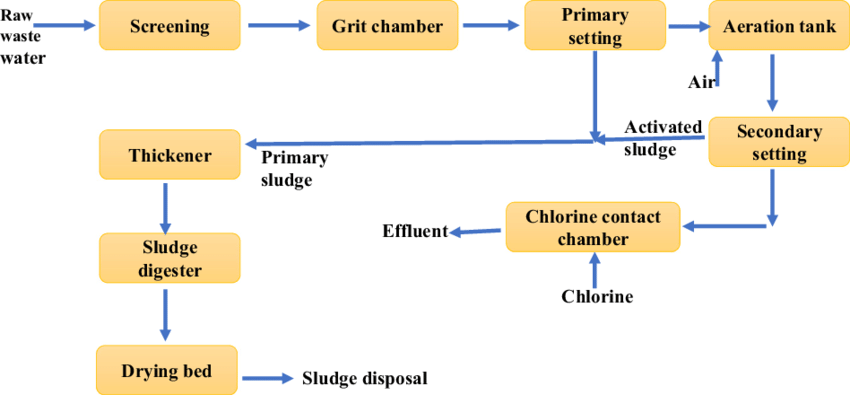The smart Trick of Reclaim Waste That Nobody is Talking About
The smart Trick of Reclaim Waste That Nobody is Talking About
Blog Article
Some Known Questions About Reclaim Waste.
Table of ContentsGetting The Reclaim Waste To WorkNot known Facts About Reclaim Waste5 Simple Techniques For Reclaim WasteSee This Report about Reclaim WasteReclaim Waste Can Be Fun For Everyone
Discover the types, events, and types of liquid waste. Domestic sewage waste describes the waste and items from a domestic septic tank. This kind of waste is produced by human beings in homes, colleges, and other structures. This only consists of sewage-disposal tanks that have a drain area. The appropriate management and disposal of domestic sewage waste require liquid waste to be transferred to a sewage treatment plant where the proper techniques and tools are put on detoxify and dispose of waste.
Industrial waste often includes prospective hazards, such as flammable materials or a mixture of fluid and solid waste products, and calls for a much more advanced and comprehensive disposal procedure. The disposal of business waste commonly entails the purification of waste prior to transportation to ensure risk-free and appropriate disposal. Industrial waste is created from byproducts and runoff of industrial processes and production.
This kind of waste can not utilize the exact same sewage management transportation or procedures as septic or business liquids. The hazardous waste monitoring process needs the inspection and screening of liquid waste before it undertakes the disposal process (industrial wastewater treatment). Drainage waste is the liquid waste that originates from drainage and excess stormwater in extremely populated locations or cities
Drainage waste can create contamination and flooding if not managed appropriately. Ensuring correct waste management can prevent calamities and decrease ecological damage.
Everything about Reclaim Waste
Call PROS Services today to discover our waste management and disposal services and the correct means to look after the liquid waste you create.
(https://soundcloud.com/reclaimwaste1)Do you know what happens to your water when you disengage, purge the toilet or drain the cleaning machine? No? Well, it's worth understanding. This supposed 'wastewater' is not just an essential source however, after treatment, will certainly be released to our land, rivers or the ocean. Used water from bathrooms, showers, bathrooms, kitchen area sinks, washings and commercial processes is understood as wastewater.

water utilized to cool machinery or clean plant and devices). Stormwater, a kind of wastewater, is drainage that streams from agricultural and city locations such as roof coverings, parks, yards, roads, paths and rain gutters into stormwater drains, after rain. Stormwater flows neglected directly to local creeks or rivers, at some point getting to the ocean.
Top Guidelines Of Reclaim Waste
In Queensland, many wastewater is dealt with at sewage treatment plants. Wastewater is delivered from residential or industrial websites with a system of sewers and pump stations, understood as sewage reticulation, to a sewage therapy plant.
The Department of Natural Resources recommends neighborhood governments about handling, operating and keeping sewerage systems and treatment plants. In unsewered areas, city governments may need owners to install private or family sewage therapy systems to deal with residential wastewater from toilets, cooking areas, bathrooms and laundries. The Division of Natural Resources authorizes using household systems when they are verified to be reliable.
Most stormwater gets no therapy. In some new neighborhoods, therapy of some stormwater to remove trash, sand and crushed rock has actually started making use of gross toxin catches. Wastewater therapy occurs in 4 phases: Gets rid of strong issue. Larger solids, such as plastics and other objects wrongly released to sewers, are removed when wastewater is passed with displays.
Wastewater after that flows into big storage tanks where solids work out and are eliminated as sludge. Grease and scum are skimmed from the surface. Makes use of tiny living organisms called micro-organisms to damage down and remove staying dissolved wastes and fine particles. Micro-organisms and wastes are incorporated in the sludge. Removes nitrogen and phosphorus nutrients that could cause algal blossoms in our rivers and threaten marine life.
Some Known Incorrect Statements About Reclaim Waste
Nutrient elimination is not readily available at all sewage therapy plants because it calls for costly specialized tools. Clear liquid effluent generated after therapy might still contain disease-causing micro-organisms - liquid waste disposal.

This normally means wastewater needs to be dealt with or impurities removed prior to it can be released to rivers. Most wastewater flows right into the sewage system. Under the Act, city governments provide approvals and permits for environmentally pertinent activities (Ages) entailing wastewater releases that could have a neighborhood impact. The division administers authorizations and permits to Ages including wastewater releases that may have a regional or statewide effect.
Getting The Reclaim Waste To Work
Otherwise, examples are considered research laboratory evaluation. Typically several examinations are needed to establish the degrees of each of the different pollutants such as oils, heavy steels and chemicals in water. Tracking offers factual details regarding water top quality and can validate that licence problems are being fulfilled. The information obtained through tracking supplies the basis for making water quality decisions.
Report this page